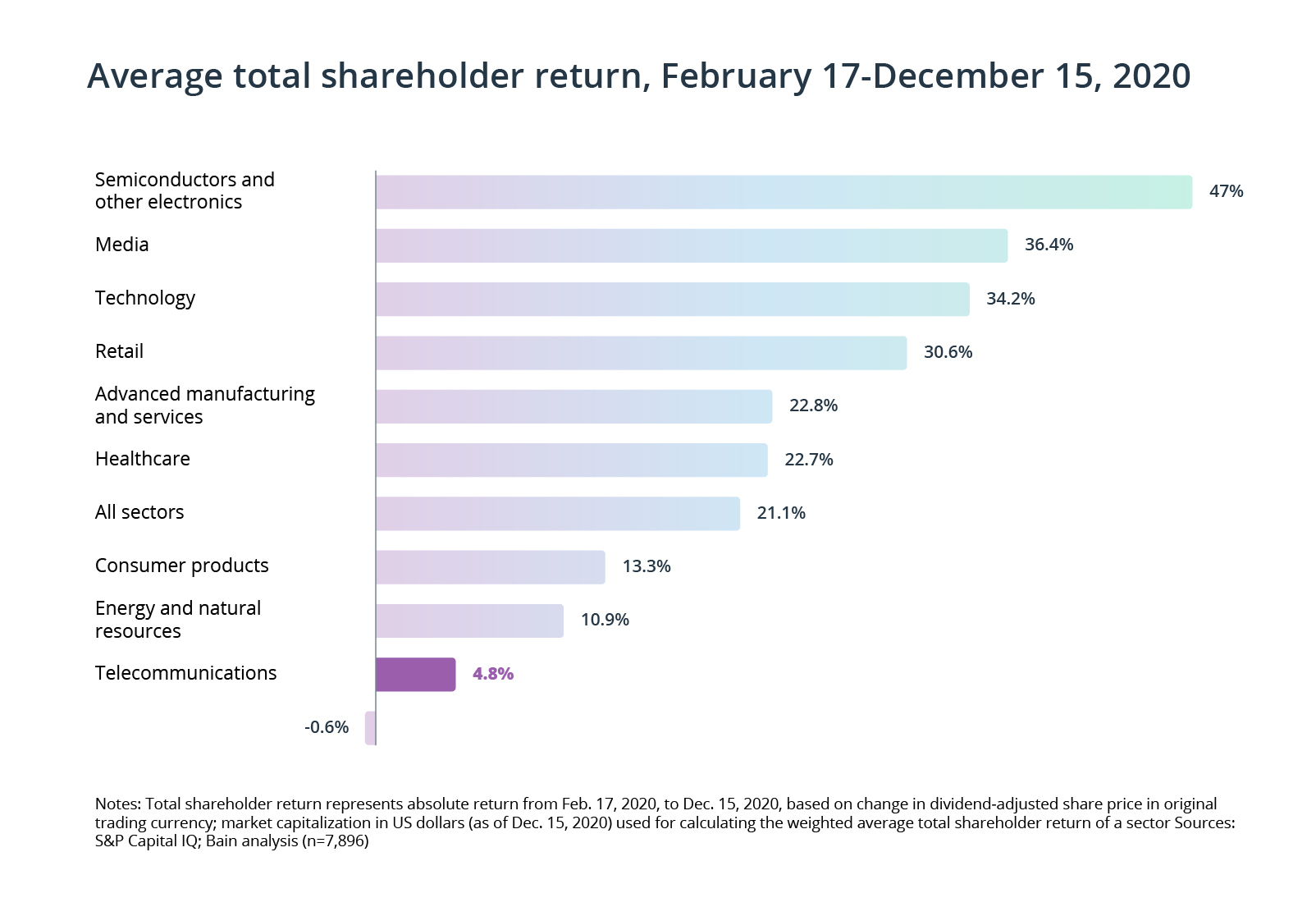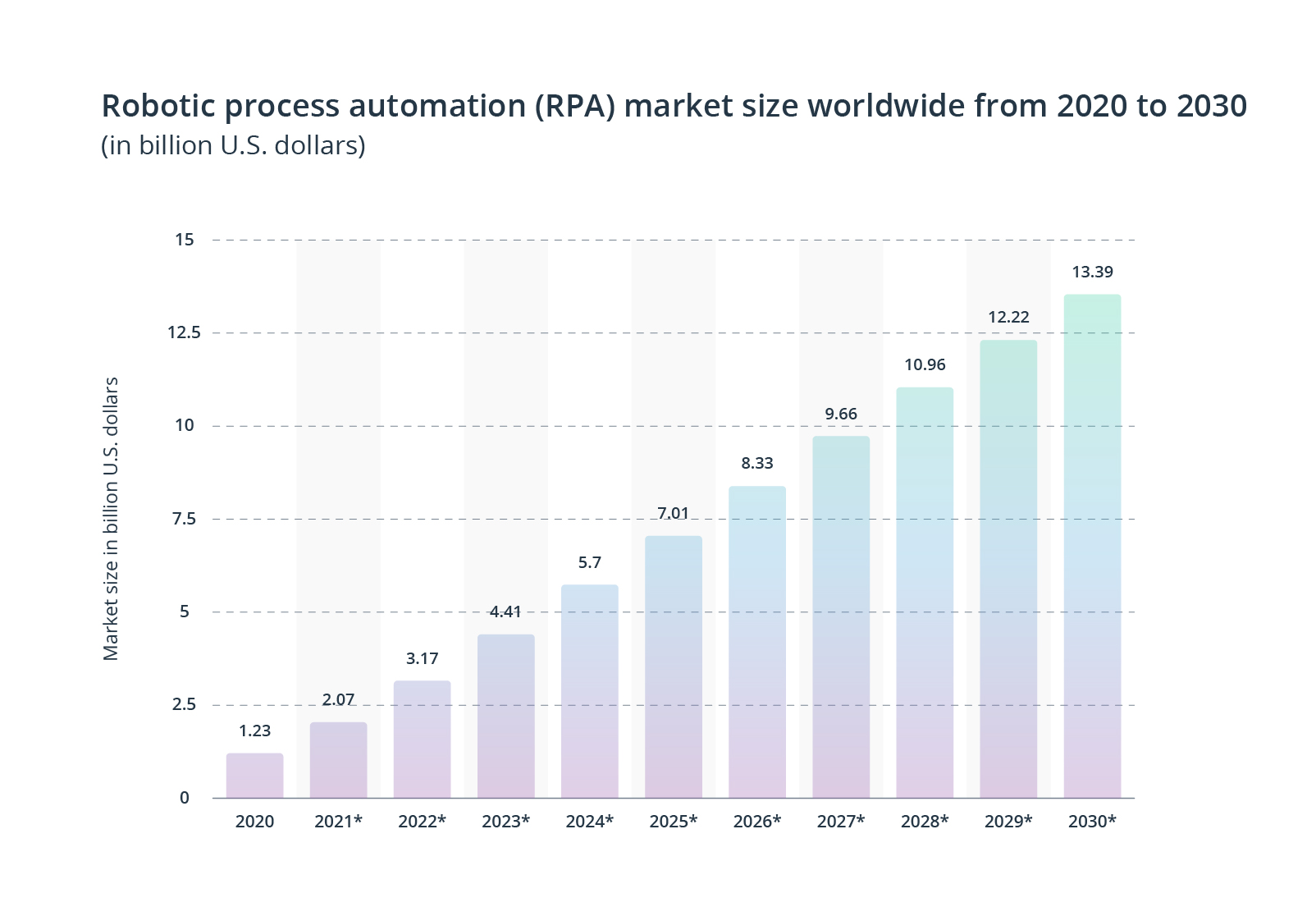The telecommunications industry is known for its complexity, with success hinging on efficient operations across various business units. Artificial intelligence (AI) has emerged as a promising tool to simplify and optimize these operations. Telcos are now beginning to harness AI’s potential, particularly in improving the in-store customer experience call center efficiency, and workforce deployment.
In an economically challenging landscape, investment in AI may seem daunting. Nevertheless, leading telcos have already embraced AI, and new digital entrants are reshaping the industry by leveraging AI in the age of software-defined and cloud-based networks. To stay competitive, telcos must keep pace with both evolving technology and the pioneers driving its adoption.
Companies will adopt AI — not just because they can, but because they must.
The added value of AI in telecom
Artificial intelligence promises to address a multitude of pressing challenges in the telecommunications field while simultaneously unlocking significant value for both consumers and telecom operators. Telecommunications providers have long accumulated substantial volumes of telemetry and service usage data, much of which has remained largely untapped due to the absence of suitable software.
With the advent of AI, this vast reservoir of previously underutilized data transforms into fertile ground for cultivating new services, enhancing the quality of existing ones, elevating the customer experience, and streamlining business operations. According to recent research from Tractica, AI is poised to generate nearly $11 billion annually for telecom companies by 2025 — a truly astonishing figure that is poised for further growth as the realm of AI applications continues to expand.
AI in telecom software revenue by use cases

Source: Tractica
For customers, the application of artificial intelligence in telecom services translates into a much higher level of personalization (based on order history, data consumption patterns, data profiles, call frequency and duration, etc.), going as far as custom service plans and offers as well as improved quality of voice calls and data connections for online conferences.
From the operator’s perspective, the added value of AI in telecoms is mainly concentrated on the back end, where it helps streamline data transmission, dynamically adjust network settings, perform calculations on IoT edge devices, and draw actionable insights from big data lakes, among other things.
AI brings a host of advantages and opportunities:
- Swift decision-making. AI can make decisions in the blink of an eye, processing thousands of data items in mere fractions of a second. For instance, AI systems can monitor thousands of credit card transactions in real-time, swiftly identifying and blocking potentially fraudulent ones.
- Expertise. While humans invest years in acquiring expertise, AI offers a way to leverage rare and extensive knowledge more efficiently. Expertise can be distilled into a model, making it applicable across a broader spectrum. For instance, Google has harnessed AI to identify tumors from CT scans as effectively as seasoned radiation oncologists. This means that expert knowledge can be extended to scenarios where it was previously lacking, allowing human experts to allocate their time more efficiently.
- Repetition. Repetitive tasks, often considered monotonous by humans, find a perfect match in AI algorithms, which never experience boredom, fatigue, or the need for rest. AI is an ideal candidate for repetitive tasks, particularly when there is ample data available for training, as is often the case for jobs previously performed by humans.
Telecommunications companies that wholeheartedly embrace AI development services at scale will take the lead in terms of operational efficiency and the attractiveness of their service portfolio in both the B2C and B2B segments. However, it’s a multifaceted effort that necessitates tight collaboration between highly skilled AI/ML development teams and business stakeholders at many levels.
Open challenges in AI for telecom businesses
Today, most communications service providers (CSPs) are navigating a landscape where customer engagement and service delivery are being redefined. With B2B revenues affected by changing work environments, telcos are compelled to adapt swiftly and innovate to maintain a competitive edge in local and global markets. In this context, the importance of embracing telecom software development services becomes increasingly apparent. This transformation is particularly crucial as telecommunications companies increasingly sign up customers online, facing fierce competition. At the forefront of this evolution is the adoption of artificial intelligence in telecommunications, making AI a top priority for CSPs.
Global AI in telecommunications market share (%) by application, 2019

Source: Grand View Research
While the global market for AI in telecommunications is experiencing rapid growth, many businesses are still grappling with the complexities of implementing AI. Beyond the initial challenge of recognizing the need for AI and identifying suitable business use cases, the journey is beset with common obstacles. These encompass a range of challenges that CSPs must overcome to leverage AI effectively in their operations.
On the most general level, here are the main challenges CSPs are facing:
Scarcity of technical expertise
In the dynamic telecommunications landscape, as AI adoption gains momentum, one of the foremost challenges faced by businesses is scarcity of technical expertise. AI, a relatively new technology in the field, demands a specialized skill set, and building an in-house team can be a time-consuming endeavor that yields limited results, primarily due to a dearth of local talent. Scarcity of skilled AI professionals can significantly hinder the effective implementation of AI solutions in the telecom sector.
An alternative approach is to seek a technical partner experienced in the complexities of AI implementation within the telecommunications industry. However, finding a vendor with the right blend of competence and experience can be a daunting task itself. Moreover, AI implementation often involves substantial costs, underscoring the critical importance of initiating projects with the right partners to ensure a successful transition. Addressing the scarcity of technical expertise remains an intricate challenge, underscoring the need for strategic planning and selecting the right partners to effectively navigate the AI revolution in telecommunications.
Streamlining network management
The telecommunications landscape is grappling with the exponential growth of global network traffic and the ever-increasing need for network infrastructure. As a result, network management has become more intricate and costly. AI offers a promising solution to simplify these complex operations.

Source: Statista
Unleashing the power of data
Telecommunications companies have amassed vast troves of data from their extensive customer bases over the years. However, harnessing the full potential of this data has been a challenge. It often exists in fragmented or disparate systems, lacking structure or categorization. Some data may be incomplete and thus less useful. AI’s data analysis capabilities are well-suited to unraveling these complexities and extracting valuable insights.
Balancing the budget
The telecom industry has poured substantial investments into infrastructure and digitalization. In 2023, analysts project a significant increase in global operating expenses. This presents a financial dilemma for many telecom companies, prompting a search for cost-effective strategies to improve their financial performance. AI’s potential for efficiency gains can be a key asset in this pursuit.

Source: Bain & Company
Meeting the demands of a crowded market
Customers in the telecom sphere have grown more demanding, seeking higher-quality services and exceptional customer experiences. Failure to meet these expectations can lead to customer churn. AI has the potential to help telecom companies elevate their service quality and customer satisfaction, thereby enhancing their competitive edge in a crowded marketplace.
AI use cases in telecom
Having examined the key challenges in AI for telecommunications providers and potential solutions, let’s now explore specific technical domains where AI truly shines. For companies offering telecom consulting services, grasping these vital AI-driven areas is essential to offer valuable insights in this evolving industry.
Network optimization
Real-time traffic analysis and network reconfiguration is something AI can do extremely well. Intelligent AI-enabled traffic analyzers do a great job of recognizing malfunctions and bottlenecks long before they become visible to network administrators. And when it’s time to act, AI-enabled systems can modify network configurations and reroute traffic to healthy nodes in response to local equipment failures and bottlenecked channels.
Fraud prevention
One of the things that AI in telecom can do exceptionally well is detect and prevent fraud. Processing call and data transfer logs in real-time, anti-fraud analytics systems can detect suspicious behavioral patterns and immediately block corresponding services or user accounts. The addition of machine learning enables such systems to be even faster and more accurate.
Optimization of financial operations
The use of artificial intelligence in the back office helps streamline and automate various business-critical processes, resulting in reduced overhead costs and more effective planning. With increased financial efficiency comes a higher return on investment (ROI) and more funds available for capex investments, leading to greater customer satisfaction.
Preventive maintenance
AI and ML are helping the telecom industry extract crucial business insights. With vast reserves of big data, AI aids in making quick, effective decisions, from segmenting customers to predicting customer value and offering personalized purchase suggestions.
Predictive analytics, which identifies patterns in historical data, provides early warnings about potential hardware failure. These insights help create algorithms and data models to uncover the root causes of failure, enabling preventive maintenance. Telecom companies can address issues before they arise, minimizing customer support requests and enhancing the overall customer experience.
Virtual assistants
Virtual assistants and AI-driven chatbots are gradually replacing live operators at telcos for cost-saving purposes and in order to offer customers a faster, more convenient way of getting answers to their questions and resolving their issues. This became especially important in light of the pandemic, which imposed severe restrictions on the functioning of large-scale call centers.
Robotic process automation (RPA)
RPA has always been the number one choice for all digital transformation projects. If implemented correctly, it will deliver tangible value from day one by reducing document processing times and accelerating business flows. With AI applied to RPA, the performance-boosting effect is even more profound, allowing for anomaly detection and (semi-)automatic error correction.

Source: Statista
AI for telecom: Real-life examples
Having covered a number of challenges and application areas for AI in telecommunications, let’s now take a quick glimpse at some AI telecom use cases.
Verizon Communications
Verizon, one of the largest CSPs in the world, is investing heavily in AI and ML technologies to improve network performance and customer service. A recent partnership with mobile network operator Cellwize has resulted in the creation of a new intelligent platform that is facilitating the rollout of Verizon 5G sites and simplifying the development of network applications. Other AI-related partnerships include one with IBM and another with Google, whose Cloud Contact Center AI service will offer Verizon customers a more intuitive and natural way of interacting with Verizon’s support service using advanced natural language processing (NLP) features.
Vodafone
The British telecom giant Vodafone Group launched an assistant app called TOBi, a highly intelligent text bot capable of supporting users in dealing with issues, managing subscriptions, and purchasing new equipment and services.
AWS Migration Services
Intellias collaborated with a major national telecommunications company, helping them transition to AWS for enhanced data processing and business intelligence. The telecom provider sought to optimize costs, improve scalability, and accelerate growth through AWS migration. In a two-month proof of concept, Intellias swiftly designed a custom cloud solution architecture, assessed resource requirements, and estimated infrastructure costs. This collaboration aimed to significantly reduce infrastructure expenses, boost revenue, and enhance customer retention by offering personalized services. The successful partnership between Intellias and the telecom giant paved the way for continued cooperation in delivering high-end solutions.
Deutsche Telekom
Deutsche Telekom has been making considerable investments in AI at various levels. From an AI-powered chatbot called Tinka, capable of providing over 1500 answers to customers’ questions, to intelligent business planning tools, Deutsche Telekom is actively embedding AI elements into its infrastructure and service portfolio.

Source: Digitalist Magazine
Embarking on the AI journey
For CSPs just venturing into the realm of AI in telecommunications to enhance their service operations, there are invaluable lessons to be drawn from trailblazers who have already paved the way. The following represent proven best practices:
- Pinpoint high-value use cases. Start by identifying the most promising AI use cases for each business unit, tailored to their specific service operation areas like call centers, retail, in-store experiences, or field operations. The key is to address critical pain points and gaps that present opportunities. Once identified, prioritize these opportunities through a structured exercise, considering factors like feasibility, impact, and ease of implementation.
- Data roadmap development. A solid data foundation is essential. Assess the availability of data for each identified use case and establish a roadmap for developing data assets. This data-driven approach is vital to enable successful AI implementations.
- Agile evolution. Begin with descriptive analytics and embrace an Agile methodology during the initial stages of your AI-driven service operations journey. This entails progressively integrating predictive and prescriptive analytics to build a robust foundation. Implementing minimum viable products (MVPs) through focused sprints and scaling up with a continuous learning approach will ensure favorable outcomes.
- Cross-functional AI teams. Assemble dedicated AI teams in collaborative pods that encompass technical experts, business leaders, and subject-matter specialists. The effectiveness of these cross-functional teams lies in their ability to jointly develop and rigorously test AI use cases and solutions.
Embracing the future of AI in the telecom industry
Thanks to the power of the cloud, 5G, and AI, telecom companies can now provide customers with personalized assistance and answers, all in a friendly, human-like way. In the not-so-distant future, we might bid farewell to traditional human customer service agents as virtual assistants and chatbots take center stage.
The role of AI is expanding beyond customer insights; AI is getting good at predicting what consumers will do next and helping businesses make smarter decisions. This promises to cut costs, make customers happier, and keep them coming back for more.
The potential for AI in telco is huge. Big players in the industry are embracing even smarter automation systems, which means smoother day-to-day operations and happier customers.
Telecom companies on a digital transformation journey are finding success by getting AI into action early and building the right software. With AI’s supercharged data and human know-how, the sky’s the limit.
Bottom line
In the realm of AI and telecommunications is guiding an era of remarkable change. Dealing with complex networks, vast data, soaring expenses, and fierce competition, telecom providers find AI as a powerful partner. The application of AI not only streamlines operations but also elevates customer experiences and decision-making. As AI-powered virtual assistants and chatbots become commonplace, customers benefit from personalized interactions, while companies find themselves on the cusp of an AI-driven revolution. Telecom’s future is one where predictive analytics, cost-effective and elevated service quality reign supreme.
The telecommunications sector is not just at the brink of technological innovation; it is fully immersed in an era where AI holds the potential to redefine it. The adoption of AI in telecom promises a landscape where agility, cost-effectiveness, and enhanced customer satisfaction go hand in hand. Embracing AI’s capabilities today, telecommunications companies are poised to lead the way in delivering cutting-edge services and shaping the future of connectivity. It is a world where every interaction is smarter, every operation more efficient, and every connection more meaningful, setting the stage for a telecommunications industry that thrives in the age of artificial intelligence.
Contact our experts to learn more about how to get a competitive advantage and maximize the efficiency of your business by embedding AI into your operations and customer service.





